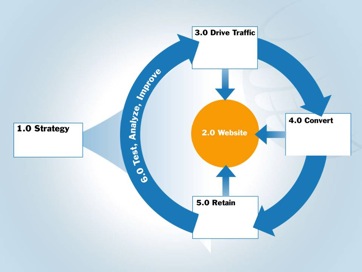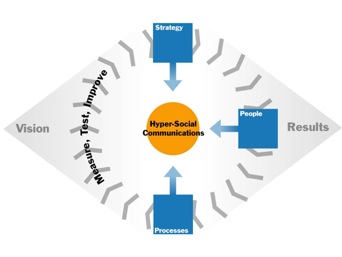Models of the new paradigm
November 23, 2010
The old 4 Ps of marketing
In the era of mass marketing, the 4Ps were the holy grail of marketing for companies.
- Product
- Price
- Place
- Promotion
These were the original four variables that marketing teams had to control to create customers and grow their businesses. It all revolves around getting people to buy what your factory has produced or getting them to purchase your services that you know how to deliver.
Twenty years ago, if you got these basically right you were going to be successful. Today, managing just the 4Ps isn’t enough to guarantee success. In fact, focusing on these four alone will virtually guarantee your business will fade into oblivion as your competition get’s in touch with customers via social media and uses new technologies as their competitive edge.
What Seth Godin says about the 4 Ps
In his book, Purple Cow, Seth Godin said there just isn’t enough Ps any more. Even if you add in publicity, packaging, pass-along, and permission there is more to creating success. This was in 2003 when he said you also needed a P for “Purple Cow” products; remarkable products that meet customers emerging needs and are truly different.
Seth has it right and now the explosion of social media, mobile platforms, and new technologies is greatly reducing the time takes the marketplace to sort out which products are remarkable, and which are the same old thing with a clever marketing message attached. When “friends” are providing the messaging for your product or service, it really better be remarkable or your company is doomed.
The old “Website Centered Model” – worked for 5 years but losing steam
Internet marketing evolved over the last 5 years (from 2005 to 2010) from the point where having a website and maybe some paid advertising or SEO was enough to drive business growth. When we first started doing marketing programs in addition to websites, it was easy picking. Yahoo had a pure auction system for bids on pay-per-click, usually costing less than $0.50.
Google was simple, easy to understand, and predictable. The results were astounding. We were heroes, bringing in lots of business on a small budget.
As more companies caught on and the art of Internet marketing became more of a science, it got tougher. First there were SEO specialists who figured out most of the Google ranking algorithm to get you first page rankings. Then pay-per-click became more complicated with tons of competing companies, quality score algorithms from Google, and landing pages designed by experts. The cost to compete skyrocketed.
Through all this, the WEBSITE remained the center of the Internet marketing world. Many thought the website would stay at the center of the new digital marketing era. Companies invested millions in Web 2.0, interactive websites, flash movies that entertained, and every gimmick you can imagine.
Our own model for Internet marketing was simple. You have a strategy and a website where all the action happens. You drive traffic into the website (or landing page) from SEO, Pay-per-Click, or even Social Media, then you convert that traffic to leads, nurture the leads with email marketing and you have a sale. Add in some analytics and testing for a full-up process to grow your business. It looked like this:
The Hyper-Social Communications centered world of business growth
Ah, but things change and views of the world order get dumped in favor of new models. With the critical storm of social media, mobile computing, and broadband access our old model is now just a small subset of the whole Digital Marketing world. From being the “main story” and where companies needed to invest to survive, website centered Internet marketing has become one of the 15 strategy-marketing-sales processes that have to be mastered to compete in the new era of Hyper-Social Communications.
Our new model looks similar, but no website now. It’s a much broader model, mastered only with transformation of your company around the idea that “communications” with your customers, employees, and partners is the new paradigm for success.
In the new model, you build your business around acceptance of the changes in communications. Your strategy is different, your people have to be selected and trained to excel in this new world, and your processes have to be transformed to incorporate social media and new technologies or you will be left behind. New metrics, beyond just Google Analytics, have to be adopted. Only testing and constant improvement remain the same in the new model.






